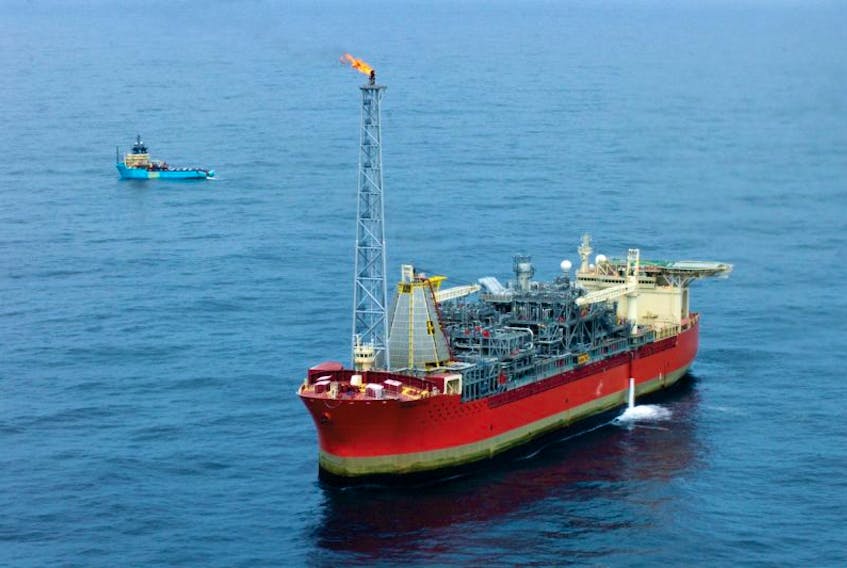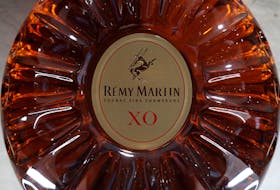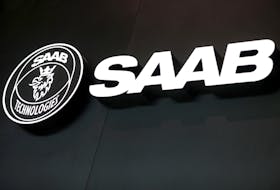The Canada-Newfoundland Offshore Petroleum Board (C-NLOPB) has signed off on its final inquiry report into a near miss between an iceberg and Husky Energy’s SeaRose floating, production, storage and offloading (FPSO) vessel last March.
The board says all the findings and contributing factors contained in the detailed 80-page report mirror those in preliminary report into the incident which led to the suspension of production aboard the vessel at the White Rose oilfield about 350 kilometres off the province’s coast.
“The C-NLOPB is satisfied that all findings from the enquiry have been addressed, and are confident that safety and environmental protection will remain at the forefront of Husky’s operations going forward,” reads a release from the board.
The incident in question occurred when a nearby iceberg, which Husky had been monitoring, changed direction early in the morning of March 29, 2017 and entered the one-quarter nautical mile ice exclusion area of the SeaRose, which was carrying 340,000 barrels of crude at the time.
Related stories:
Husky’s response ‘encouraging’: CNLOPB
C-NLOPB suspends operations on Husky Energy's SeaRose production vessel
Iceberg has near-miss with Sea Rose FPSO off Newfoundland
In response to the encroaching iceberg — described as 40-metres wide, 60-metres long and standing eight-metres above the waterline — Husky prepared the vessel to disconnect. The 84 personnel on board at the time were instructed to muster on deck and brace for impact.
By 5:30 a.m., the iceberg was within 180 metres of the SeaRose, but by 6 a.m. had drifted more than 500 metres away.
“The Board’s expectation is that all operators reduce risks to levels that are as low as reasonably practicable and place the highest priority on worker safety and environmental protection,” the statement read.
Both reports found that not only was the Ice Management Plan (IMP) not fully incorporated into Husky’s emergency response process, but that senior management did not support the Offshore Installation Manager’s (OIM) desire to disconnect and while onshore support teams “stood up to support the OIM” they ultimately “contributed to miscommunication and confusion during the incident.”
Husky, for its part, has been contrite about how the situation was handled, acknowledging their error in failing to disconnect.
“Judgement was applied to a plan that did not require judgement,” read a statement from Husky released Wednesday afternoon.
“We deeply regret the circumstances that led to this incident and are committed to learning from it.”
The company says it started making changes to its IMP immediately after the incident and that further changes were “augmented” by the findings in C-NOLPB’s preliminary report.
Some of the changes include clearer definition of roles and responsibilities, a new threat assessment matrix and an iceberg-specific hazard-based emergency response scenario for the vessel.
“As a region, it has caused us to examine old assumptions, test them, and incorporate changes where needed,” the Husky statement reads. “As a company, we strive to achieve excellence in safety, but we know that there are always opportunities for improvement. This incident reinforces that every Husky employee and contractor in the region — and every offshore worker — must be clear on one thing: safety is not just a priority, it must be the foundation of everything we do.”
The suspension of petroleum-related activities aboard the SeaRose lasted from Jan. 17 to Jan. 26, at which time the C-NLOPB’s chief safety officer and chief conservation officer were satisfied Husky had addressed the findings in the preliminary report.
After the suspension was lifted and based on feedback during the length of the suspension, the board added a section to its policy on public disclosure of incidents to ensure that notices of non-compliance and order to comply will be posted publicly in the future.
In addition, C-NLOPB chair and CEO Scott Tessier shared the boards’ regulatory oversight, inquiry, and lessons learned with the International Regulators Forum’s annual general meeting this June.









